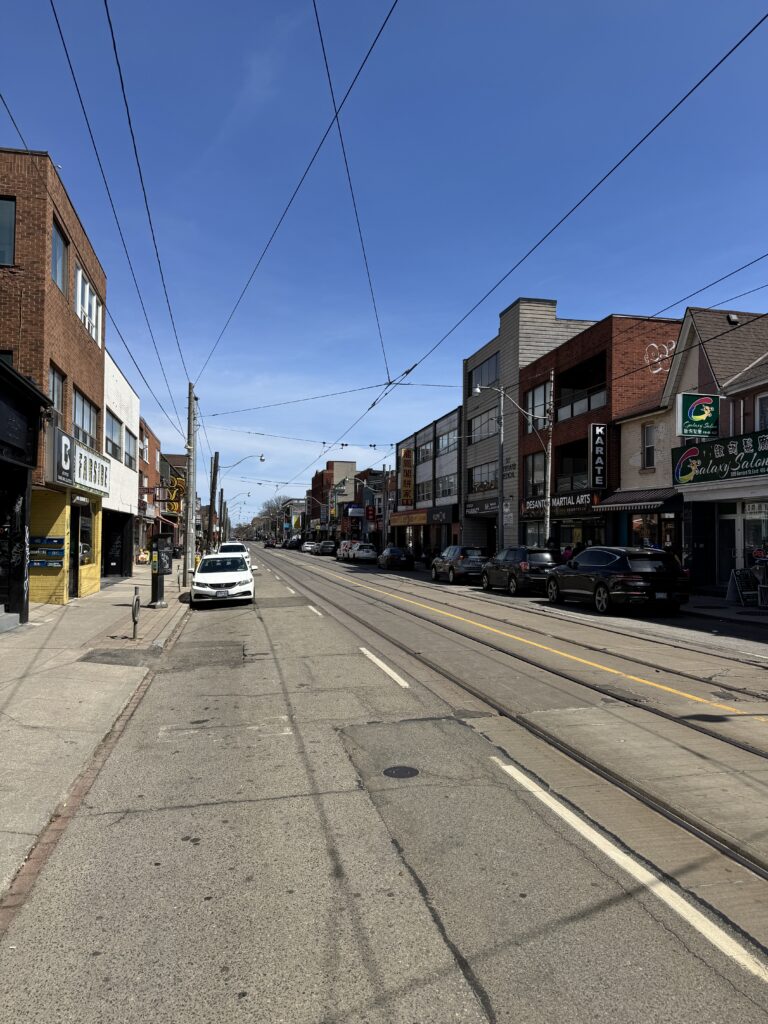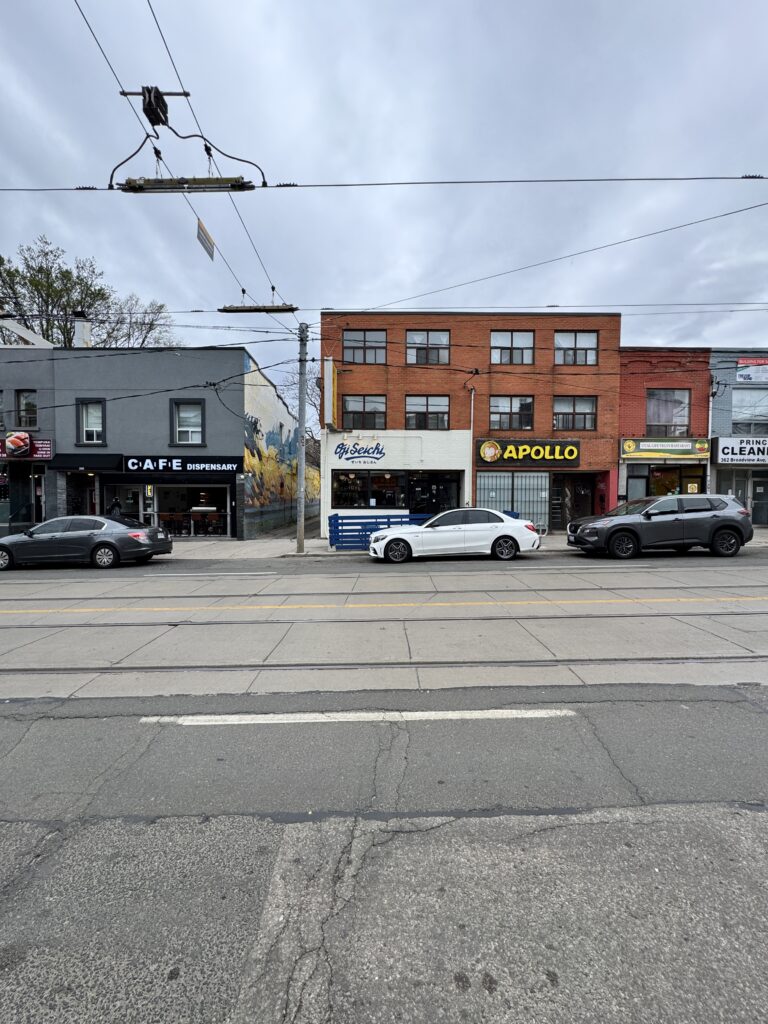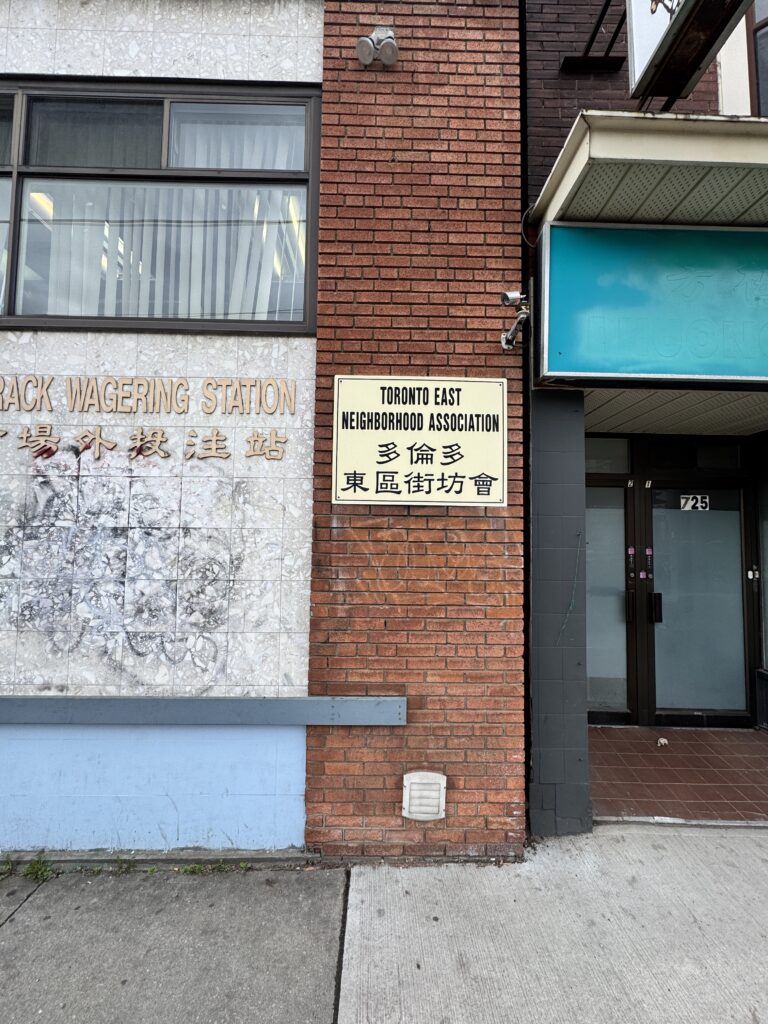Every year, on a weekend in May, a plethora of random people walking down your local sidewalk can be seen in hundreds of cities across the world. Jane’s Walks (named after Jane Jacobs) are free walks around neighborhoods, where neighborhood historians (or just randos) highlight neighborhood culture, societal issues, and opportunities for civic action.

This year, I finally attended my first Jane’s Walk – An East Chinatown Tour: Exploring Secret Tales of Migration, Culture, and Community Resilience. Led by a lovely girl named Kaitlyn and a team from the Toronto Chinatown Land Trust, and School of Cities (UofT), it was a really insightful introduction to a place few Chinese – Canadians acknowledge – East Chinatown.
An introduction to Broadview & Gerrard

Note: All of this information comes from my interpretation of the Jane’s Walk and previous personal knowledge, and as a result references are not provided. A list of links to learn more about East Chinatown is located in the index.
Tucked away east of Downtown Toronto lies Chinatown’s much smaller, more traditional Chinatown, the aptly named East Chinatown. Centered around the intersection of Broadview & Gerrard, the community is a T-shaped microcosm of Chinese grocers, restaurants, hair salons, and many elderly Chinese people who call this area home.

The community first began to sprout in the early 1970’s, with the displacement of Toronto’s original Chinatown (now Toronto City Hall) leading to the creation of two distinct Chinatowns, West Chinatown (what we typically associate with Chinatown today), and East Chinatown.
The community’s heyday took place in the 70’s and 80’s, and eventually slowed down when a new wave of Chinese immigrants moved to the more affluent suburbs of Scarborough, Markham, and Richmond Hill. By the end of the 90’s, the majority of Chinese, including a large surge of wealthy Hongkongers escaping the Handover of Hong Kong to China, had established a stable community in the suburbs, reducing the number of people who needed to come down to Chinatown for Chinese services.

Today, East Chinatown has shrunk significantly, although a strong base of Chinese-owned businesses continue to thrive along Gerrard. The community remains as a bastion of cultural spirit in East Toronto – continuing to build on the neighborhood’s Chinese spirit to reflect on the community’s multicultural population.
Stories of East Chinatown
When I first joined the walk, I was expecting to be paraded around East Chinatown and shown the sights of a neighborhood gone derelict. What was highlighted instead, were a collection of stories, jokes, and gossip about the community’s spirit, all in the lens of Kaitlyn’s grandma, who owned Dunhuang Books 敦煌書店 (one of Toronto’s first Chinese bookstores).
Learning about her family’s story of resilience, with East Chinatown’s characters in tow was a delightful and enterprising story of the power of a community. Like a gaggle of sheep, all 200 of us (unofficial numbers provided by one of the Jane’s Walk staff) wandered around East Chinatown and learned about various stories including
- The controversy around the Sun Yat-sen statue in Riverdale Park and why the Chinese community built another one in West Chinatown (TLDR: it’s ugly and he’s short?)
- Broadview Library and how it became the first library in Toronto to provide Chinese language literature
- Toronto’s controversial Paifang 牌坊, welcoming visitors to a internationally recognized parking lot
- The Seven Wonders of the World Scavenger Hunt (have you found all seven murals scattered throughout the neighborhood?)
- The story of Dunhuang Books, and how it became a literature hub for Chinese living abroad (who mostly agreed with the Communist viewpoint)
- East Chinatown and how it managed not to look like a cartoonish Chinatown (which I love by the way, San Francisco Chinatown!)
- Charlie’s Meat and the rumors that he shared more meat than socially acceptable…
Weaved along all of these stories, I really began to sense a soul embedded into East Chinatown. My knowledge on this area, while shallow, was embedded in its role it played in the past, and not the continuing role it plays into the future of this area of Toronto.

Today, East Chinatown continues to play a role in the community of East Toronto, with Chinese grocers serving multicultural communities, and serving as the home to multiple small Asian-Canadian businesses that have revitalized the area’s youthful spirit (Oji Seichi, Issho Bakery). Kaitlyn provided a local perspective on the energy that multiple cultures shaped in East Chinatown – a perspective difficult to grasp from the cover of a webpage.
Being Your Neighborhood Advocate
What I ultimately found great about Jane’s Walks though, is how important it is to foster local knowledge to improve your own community. Our places are woven with stories of people past who have contributed in their own way to make each neighborhood what it is.
As someone who lives in a neighborhood, you have the ability to work to shape the impact of your place. Local change is important because it impacts people directly where they live, work, shop and play. I appreciated this walk for what it did to East Chinatown – created a story of resilience, and cemented a role for itself in today’s Toronto. If you have the ability to see how your own story can impact your neighborhood, this is a gift that you can use to spur civic action and inspire change.

Perhaps it was ultimately shortsighted to mourn East Chinatown’s role in Toronto’s Chinese history, and instead choose to welcome it as a spirit of the community it continues to shape today. If you’ve never been to East Chinatown, I truly welcome you to explore it – check out Que Ling, or enjoy the sights of the Toronto Skyline at Riverdale Park.
Learning more about East Chinatown
- East Chinatown (wikipedia)
- Welcome to East Chinatown (Toronto Star)
- Arlene Chan (unfortunately I don’t have her contact information but she’s the walking historian of Chinese-Canadian history)
Leave a Reply
You must be logged in to post a comment.